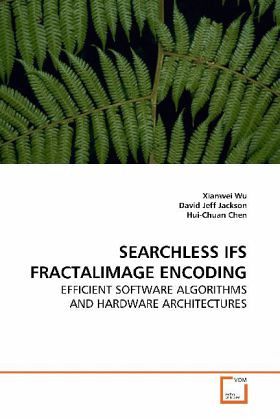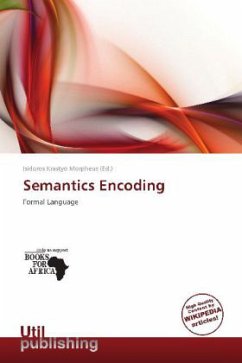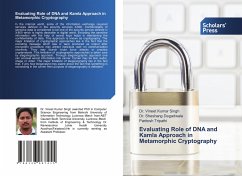
SEARCHLESS IFS FRACTALIMAGE ENCODING
EFFICIENT SOFTWARE ALGORITHMS AND HARDWARE ARCHITECTURES
Versandkostenfrei!
Versandfertig in 6-10 Tagen
39,99 €
inkl. MwSt.

PAYBACK Punkte
20 °P sammeln!
Fractal image compression is a lossy technique withhigh compression ratios, good quality, and fastdecoding. However, the computational complexity andlong coding time makes it unpractical. This bookintroduces possible solutions for these problems.In the book, A full quadtree and a full binary-treesearchless fractal algorithms introduced in chapter 1and 2. The full quadtree algorithm introduced inchapter 3 has a simpler data structure allowing ahardware implementation. The two-level quadtreealgorithm introduced in chapter 4 is an improvedversion of chapter 3. Chapter 5 gives a two-levelfractal F...
Fractal image compression is a lossy technique with
high compression ratios, good quality, and fast
decoding. However, the computational complexity and
long coding time makes it unpractical. This book
introduces possible solutions for these problems.
In the book, A full quadtree and a full binary-tree
searchless fractal algorithms introduced in chapter 1
and 2. The full quadtree algorithm introduced in
chapter 3 has a simpler data structure allowing a
hardware implementation. The two-level quadtree
algorithm introduced in chapter 4 is an improved
version of chapter 3. Chapter 5 gives a two-level
fractal FPGA hardware architecture design
corresponding to chapter 3. Chapter 6 improves the
result of chapter 5 by employing 4 quadtree levels.
The most important findings of this book are: 1. The
algorithms fix the location of domain block. It
reduces the complexity of the fractal encoding. 2.
The algorithms can encode smaller range blocks, even
single pixels. This is unique among current fractal
algorithm implementations. 3. The algorithms arefaster than the traditional methods because of no
domain block searching. 4. The algorithms can be
transferred into FPGA hardware architecture.
high compression ratios, good quality, and fast
decoding. However, the computational complexity and
long coding time makes it unpractical. This book
introduces possible solutions for these problems.
In the book, A full quadtree and a full binary-tree
searchless fractal algorithms introduced in chapter 1
and 2. The full quadtree algorithm introduced in
chapter 3 has a simpler data structure allowing a
hardware implementation. The two-level quadtree
algorithm introduced in chapter 4 is an improved
version of chapter 3. Chapter 5 gives a two-level
fractal FPGA hardware architecture design
corresponding to chapter 3. Chapter 6 improves the
result of chapter 5 by employing 4 quadtree levels.
The most important findings of this book are: 1. The
algorithms fix the location of domain block. It
reduces the complexity of the fractal encoding. 2.
The algorithms can encode smaller range blocks, even
single pixels. This is unique among current fractal
algorithm implementations. 3. The algorithms arefaster than the traditional methods because of no
domain block searching. 4. The algorithms can be
transferred into FPGA hardware architecture.












